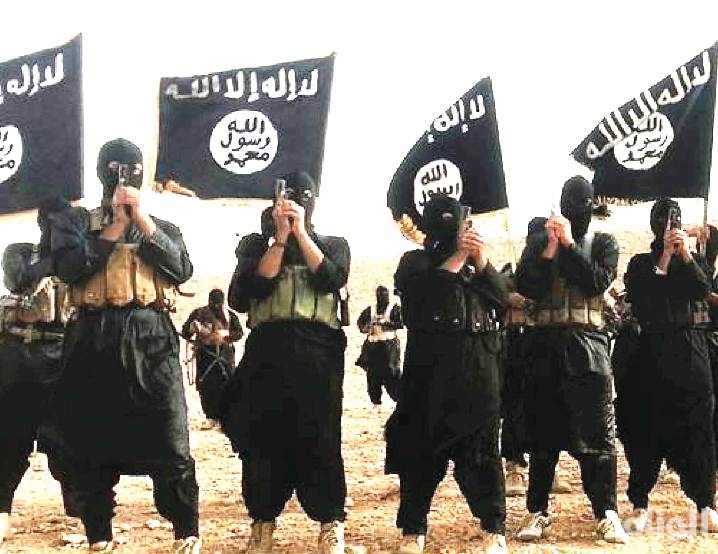Ali Rajab
Syria’s announcement that it had already eradicated the self-styled Islamic State of Iraq and Syria (ISIS) is doubtful.
This is particularly so, given the presence of concentration centers of the terrorist organization in what is known as “Useful Syria”, which encompasses six Syrian provinces, and also in border areas.
Observers believe, meanwhile, that ISIS will continue to exist in Syria by maintaining presence in some pockets, known by counterterrorism experts as “concealed clusters”.
These are concentration centers of the terrorist organization in populated and border areas. These centers are connected with each other through a group of fighters who ensure the survival of the organization and wait for an opportune moment when they can overrun Syrian territories once more by attacking troops controlling these territories.
This plan, the same observers said, is one of the possible scenarios for the survival of ISIS and its expansion in Syria, given the failure of Syrian rivals to reach a political solution in the ongoing talks in Geneva, the Turkish-Kurdish conflict, one on hand, and the Kurdish-Arab conflict, on the other, and the departure of a number of Russian troops from Syria.
ISIS in Damascus
ISIS has managed to control some buildings within the al-Tadamon neighborhood southern Syrian capital, Damascus, following an attack on December 13th against Syrian army troops.
ISIS militants overrun a number of Syrian army posts in the neighborhood, according to the pro-ISIS news agency, Amaq.
It said a number of army troops were killed in the attack and others injured.
The pro-Syrian regime network, Damascus Now, meanwhile, said ISIS militants had controlled ten buildings within the neighborhood.
National Defense Forces, the network said, get ready to recapture the buildings from ISIS.
ISIS militants sneaked into the neighborhood from Yarmouk Camp, most of which ISIS controls, through some districts controlled by the Syrian opposition.
In its southern Damascus battles, ISIS mostly depends on sniping Syrian army troops, a fact underlined by the organization itself in a recent press release.
On July 9th, southern Damascus was part of a ceasefire agreement. Egypt and Russia brokered a similar agreement in the Northern Homs Countryside and another in Idlib on September 15th. All these agreements were, however, violated, which led to the loss of civilian life.
Yarmouk Camp
ISIS also overran almost 85 percent of Yarmouk Camp, turning the al-Hajar al-Aswad neighborhood of the camp into its own stronghold.
Some pro-Syrian regime sources claimed in October that the Syrian army would stage an operation in order to regain control of the camp from ISIS. They said this following the bombing of a number of security posts in central Damascus.
ISIS in Idlib
ISIS established presence in Idlib in the last few days, four years after it was kicked out of the northwestern Syrian city, which is now infested with militant groups active in Syria.
On Saturday, ISIS militants recaptured territories in Idlib after battles with another jihadist group, according to the UK-based information office, Syrian Observatory for Human Rights.
This occurred only days after battles between ISIS and the Salafist militant group, Tahrir al-Sham, in Hama, after which ISIS controlled some villages in the northeastern part of the west-central Syrian city, the observatory said.
Deir ez-Zor
ISIS continues to maintain presence in Mayadin, a town of Deir ez-Zor, which the organization lost in early October. ISIS also controlled a number of villages and towns in the province in a string of coordinated attacks most recently.
Al-Bukamal
ISIS is also still strong in al-Bukamal, on the border between Syria and Iraq.
The organization succeeded in taking a number of Syrian army troops hostage in the northwestern part of the city, according to Amaq.
The agency ran the photos of three of the hostages late on Wednesday, December 13th and said they were army troops taken hostage near the city.
The media department of the Syrian army has not commented on this report by the pro-ISIS agency yet.
ISIS stages continual attacks on Syrian army posts in al-Bukamal, killing dozens of troops every day. Most of the ISIS operations are staged southern Mayaden.
Al-Bukamal is the second largest administrative division in Deir ez-Zor. Battles continue to rage on in the vicinity of the city as the Syrian army tries to kick ISIS out of it.
Some observers believe that the bulk of ISIS force has already been obliterated, especially after the recapture of Raqqa, the most outstanding ISIS stronghold, and also the organization’s withdrawal from areas between Eastern Homs Countryside and Deir ez-Zor.
ISIS is believed to be maintaining its attacks in order to impose its conditions in any future talks on its withdrawal from the areas it controls.
Most certainly, the organization is still strong in Syria and has a plan for maintaining presence in it, despite the huge defeats it sustained in 2017. If anything, this shows that ISIS is still alive in Syria and is able to last, despite the loss of almost all the territories it captured in 2014 and 2015. In doing this, ISIS depends on the concealed clusters which aim to ensure the continuity of its presence in Syria.








































admin in: How the Muslim Brotherhood betrayed Saudi Arabia?
Great article with insight ...
https://www.viagrapascherfr.com/achat-sildenafil-pfizer-tarif/ in: Cross-region cooperation between anti-terrorism agencies needed
Hello there, just became aware of your blog through Google, and found ...